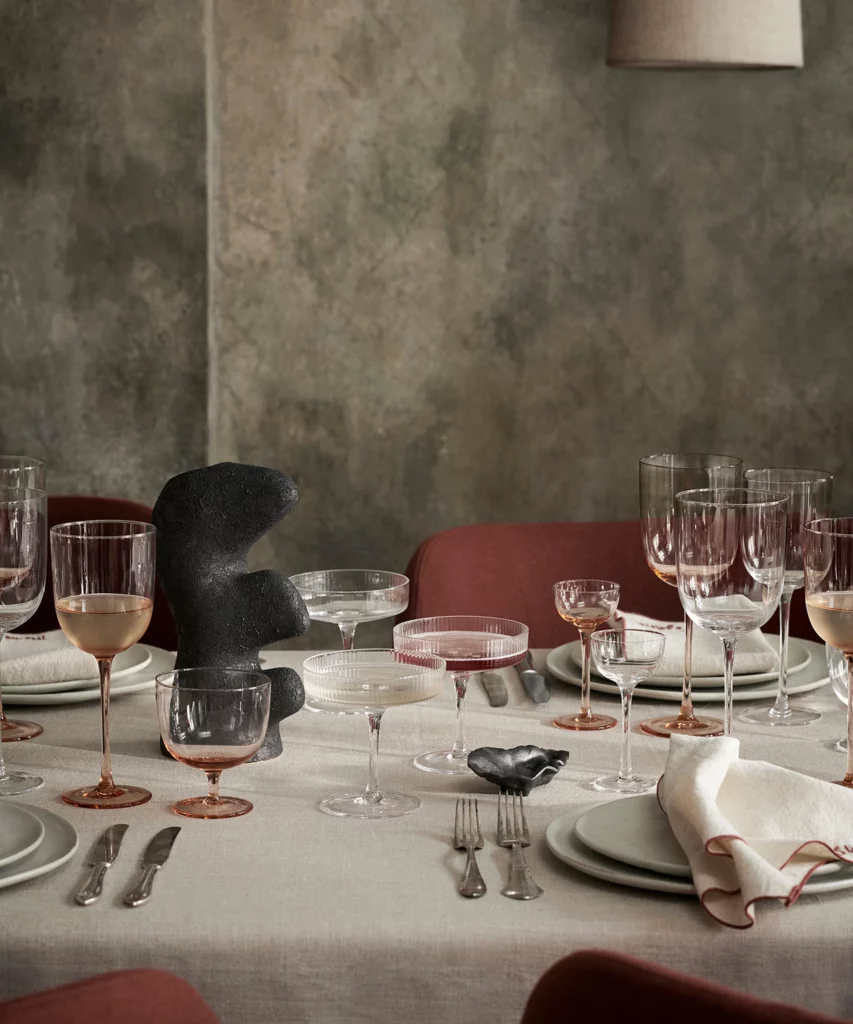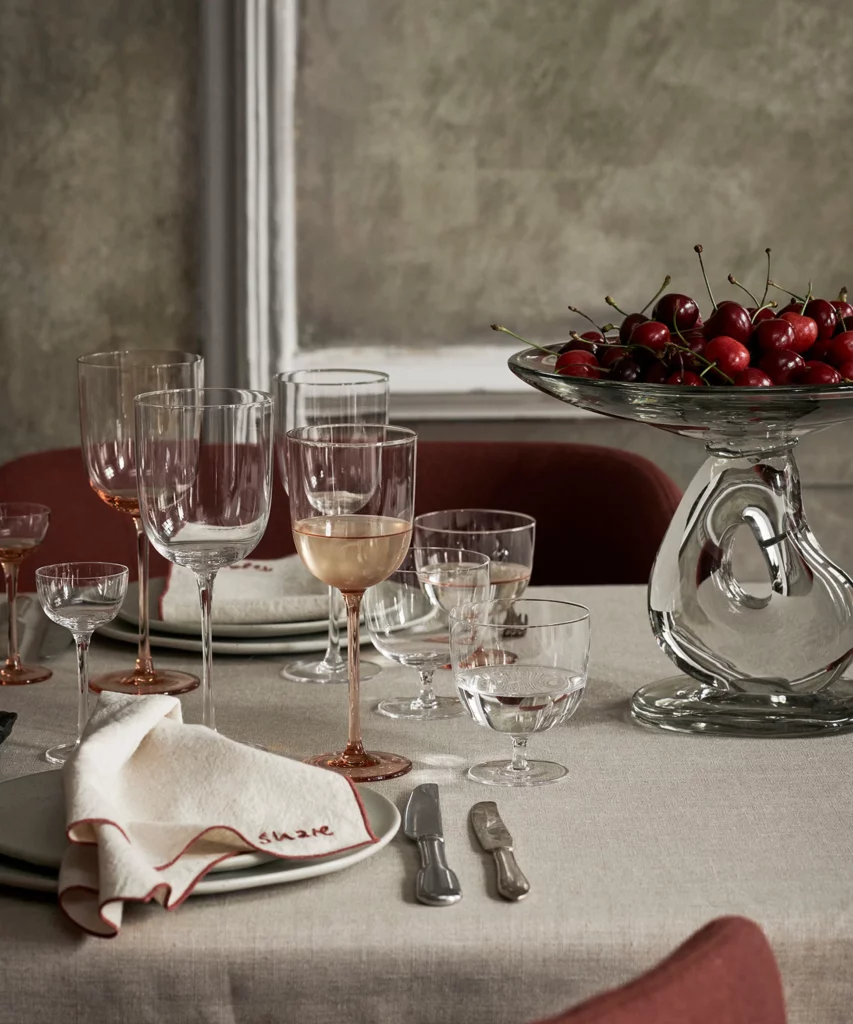All, Kitchen + Bar, Living
Wine Appreciation For Beginners
Wine Appreciation For Beginners
(We’re all familiar with the term ‘wine snob.’) But the truth of the matter is, wine is meant to be enjoyed by everyone, no matter how extensive or limited your knowledge might be. That said, if you’re eager to broaden your understanding of wine – from how it’s made to deciphering different flavor profiles – allow our beginner’s guide for wine appreciation below to shed some light.

Unless you’re a chemist, the process of changing grape juice into wine might not be so obvious. And while it isn’t necessary to memorize the intricate mechanics, there’s something to be said about understanding the effort that goes into the winemaking process that makes you appreciate your glass even more.
A Brief Explanation: Once the grapes have been picked, they are brought to the winery to be crushed, which splits the skins of the grape and releases some of the juice. These crushed grapes are further pressed to extract remaining liquid (the timing of this step depends on whether it’s a red, rosé, or white wine). The alcoholic fermentation process occurs when yeast feed on the sugars in the grape juice and produce alcohol. The yeast also produce carbon dioxide gas as well as heat. Once the yeast have consumed all of the sugars, the fermentation is complete and the wine moves on to stored or matured before being bottled.
A (Very) Brief Explanation: Yeast eat the sugar in grapes, producing carbon dioxide gas and heat, resulting in an alcoholic dry wine that is completed once all of the sugars are consumed.
While you don’t need to swirl and sniff every single sip of your wine, taking the time to be present with what you’re consuming is always worthwhile. To begin, release the aromas in the wine by swirling your glass. (If you’re worried about spilling, ensure your glass is only about one-third full and keep the glass on the table while swirling.) Place your nose over the rim and take a moment to consider what you are smelling. Red fruit? Black fruit? Baking spices? White flowers? Brioche? Next, take a sip to assess the palate. There are several components to a wine’s flavor profile, from acidity and tannins to body and alcohol. And, of course, there are flavor characteristics that shine through, such as plum notes in a Merlot, or citrus in a Chardonnay.
One of the easiest ways to turn off beginners is to use too much wine jargon. That said, if you find yourself at the wine shop or restaurant unsure of how to describe what you like, it doesn’t hurt to have a few straightforward descriptors on hand. A few worthy mentions:
1. Fruity — A fruity wine is not the same thing as a sweet wine. In fact, most wines on a menu will be dry so you need not worry about asking if the wine is dry unless you want to order a slightly sweet style, such as ‘off-dry’ (which is great for tempering spicy foods, by the way).
2. Herbaceous — From freshly-cut grass and haystacks to dried herbs, if your heart sings when you sniff these kinds of notes, be sure to add it to your vocabulary.
3. Tannins — The sensation of tannins is similar to how tea makes the top of your mouth dry. When a wine is overly tannic, it can be unpleasant, but if you’re looking for a stronger wine to pair with a bold dish, it can make for a brilliant pairing.
4. Spice — Some wines, such as Syrah, can give off peppery, spice notes. Other similar notes in this category include cinnamon, cloves, and anise.
5. Savory — If you enjoy aromas and flavors of leather, tobacco, mushrooms, and smoke, be sure to mention this as there are several incredible wines that offer these complex notes.
One of the single most important ways to appreciate wine is to be open minded. The world of wine is vast, but many individuals stick with their go-to varieties. Resist this urge! If you’re not sure where to start, find a wine shop that stocks independent producers and ask them for insights based on what you’ve liked in the past. Once you open yourself up to the world of wine, you’ll realize that learning never ends (which is part of the fun).
You don’t need to train as a sommelier to master your wine opening skills—it just takes practice. Skip the gadgets and invest in a simple wine key. To remove the cork, cut the foil just below the lip of the bottle and throw it away. Place the point of your wine key in the center of the cork and push down slightly while twisting. Turn the corkscrew clockwise into the cork until it is deep enough into the cork to pull out. Then, place the first step of the wine key’s lever on the lip of the bottle and pull up to begin removing. Once the cork is about halfway out, move the lever to the second step of the wine key and continue pulling. Once it’s almost out, use your hand to gently twist the cork the rest of the way out.
Do you need luxury glassware to enjoy wine? No. Will the act of sipping a thoughtfully chosen Cabernet Franc out of an elegant Austrian crystal glass enhance the experience? Probably. While you don’t need to shell out serious cash for this, do a bit of research to see what your options are based on your budget and go from there. And always remember—hold your wine glass from the stem!

While you most certainly don’t need an electric wine opener, there are gadgets that are worth adding to your repertoire. For starters, an air pump will go a long way and can preserve the integrity of an open bottle of wine for several days. On a similar note, wine stoppers for sparkling wines and Champagne are great to have on hand to keep the bubbles razor sharp throughout the drinking experience. Other gadgets and accessories to consider also include wine cooler sleeves that you can keep in the freezer as well as a dedicated brush for cleaning wine glasses.
While a wine fridge isn’t a possibility for every budget and living space, if you can manage, this investment will keep your bottles safely stored. The quality of a wine can plummet if it’s improperly stored (think: fluctuating temperatures, rattling surfaces, direct sunlight), and a wine fridge ensures a safe environment.
Rosé during winter? Champagne on a Tuesday night with pizza? You bet. There’s no need to save sparkling wines for special occasions or only drink it during a certain time of year. Simply put: wine is meant to be drunk—embrace and appreciate it simply just because.
There are a few traditional food and wine pairings that practically every wine drinker is aware of: a big bold Cabernet Sauvignon with steak, Champagne and oysters, Chianti and pasta. But these pairings can stifle the opportunity to explore and experiment, so be open to trying your wines with unexpected foods. Also, toss wine ‘rules’ you may have heard out the window, such as the notion that fish can only be paired with white wine. (For the record, we love a fruity, spicy Gamay with grilled snapper!)
Tell Us Your Thoughts